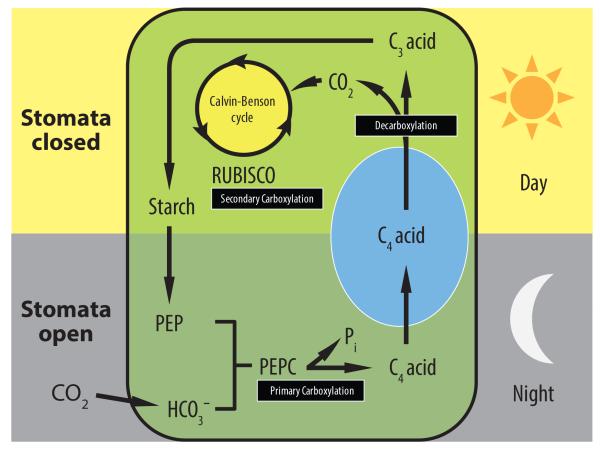Figure 1.
A simplified view of crassulacean acid metabolism (CAM). Stomata open at night allowing atmospheric CO2 to enter the cell to be captured as bicarbonate (HCO3−) by cytosolic phosphoenolpyruvate carboxylase (PEPC) leading to the formation of C4 acid, which undergoes protonation and is stored in the vacuole as malic acid. Stomata are closed for all or part of the subsequent day owing to malic acid efflux from the vacuole and decarboxylation by the malic enzyme to release CO2, which is then refixed by plastidic ribulose-1,5- bisphosphate carboxylase/oxygenase (RUBISCO) through the Calvin–Benson photosynthetic carbon reduction cycle. C3 acids produced in the cytosol serve as substrates for the gluconeogenic pathway during which carbohydrates are regenerated and may be stored as starch (shown) or other storage carbohydrates.

